Don't wanna be here? Send us removal request.
Text
Transforming Rehabilitation Training Using Virtual Reality
Rehabilitation training refers to a structured program designed to help individuals recover or improve their physical, mental, or cognitive functions after an injury, illness, surgery, or a health condition. The goal of rehabilitation training is to restore as much function as possible, enhance the quality of life, and help individuals regain independence in daily activities.

Virtual reality (VR) has emerged as a transformative tool in the field of rehabilitation, offering immersive and engaging environments for patients recovering from injuries, surgeries, or neurological conditions. By integrating VR into rehabilitation training, clinicians can provide patients with customized exercises, real-time feedback, and controlled settings that simulate real-world challenges.
Key Steps to Implement VR Rehabilitation Training

1. Assess Clinical Needs and Goals
Identify the rehabilitation goals based on patient needs (e.g., motor function recovery, cognitive improvement, or pain management).
Determine the patient demographics and specific conditions to be addressed, such as stroke recovery, sports injuries, or post-operative therapy.
2. Choose Appropriate VR Hardware and Software
Select VR hardware based on usability, portability, and budget (e.g., headsets like Meta Quest, HTC Vive, or medical-grade devices).
Opt for rehabilitation-specific VR software that offers customizable training modules, patient progress tracking, and integration with other medical tools.
3. Develop Tailored Training Programs
Collaborate with rehabilitation specialists to design VR exercises aligned with therapy goals.
Include simulations that improve balance, strength, coordination, or cognitive skills, depending on the patient's condition.
4. Establish a Controlled Environment
Create a safe and supervised setting for patients to use VR.
Train therapists to monitor sessions and assist patients in navigating the virtual environment.
5. Integrate Monitoring and Feedback Systems
Use sensors and VR analytics to track patient movements, response times, and progress.
Provide immediate feedback to patients to enhance motivation and performance.
6. Train Staff and Educate Patients
Ensure therapists and medical staff are trained in operating VR equipment and interpreting data.
Educate patients about the benefits of VR training and how they complement traditional rehabilitation methods.
7. Evaluate and Adapt Programs
Regularly assess the effectiveness of VR training through patient outcomes and satisfaction surveys.
Update the training modules based on feedback and advances in VR technology.
Read the case study on: Rehabilitation Training Program in Virtual Reality
Benefits of VR Rehabilitation Training
Enhanced Engagement: Gamified elements make rehabilitation exercises more enjoyable and less monotonous. Personalized Therapy: Tailored VR programs address the unique needs and pace of individual patients. Real-Time Progress Tracking: Analytics provide valuable insights for therapists to adjust treatment plans. Reduced Travel Barriers: Portable VR setups allow for home-based rehabilitation, increasing accessibility. Improved Outcomes: Studies show VR-based rehabilitation can lead to faster recovery and better adherence to therapy.
Applications in Rehabilitation

Neurological Rehabilitation: For conditions like stroke, traumatic brain injury, or Parkinson’s disease.
Orthopedic Recovery: Following surgeries such as knee replacements or ligament repair.
Pain Management: Distraction techniques using VR can reduce chronic pain and anxiety.
Sports Injury Rehab: Enhancing performance recovery for athletes. Conclusion
Implementing VR in rehabilitation training offers a cutting-edge approach to improving patient outcomes, increasing accessibility, and enhancing engagement. As technology continues to evolve, VR promises to play an even more significant role in modern rehabilitation practices.
0 notes
Text
Top 5 AR Innovations of 2024: Transforming the Future with Augmented Reality

The year 2024 has been monumental for augmented reality (AR), with groundbreaking innovations pushing the boundaries of what was once considered science fiction. AR has evolved from novelty tech into a crucial component across various industries, from gaming and retail to healthcare and education.
As AR development services and AR app development services continue to expand, this article explores the top five AR innovations of 2024 that are shaping the future.
1. AR Cloud: The Future of Persistent Augmented Reality
One of the most transformative AR innovations of 2024 is the AR Cloud, a digital layer over the physical world that allows AR experiences to be persistent and shared across devices and users. This technology enables the creation of a shared, spatial map that devices can access to overlay digital content in a consistent manner.
How AR Cloud Works
The AR Cloud operates by continuously scanning and mapping the physical environment, creating a digital twin. This map is then used by AR applications to anchor digital objects in the real world accurately. This shared data layer allows multiple users to interact with the same AR content from different perspectives, enhancing collaboration and social interactions.
Applications and Benefits
Retail: AR Cloud enables retailers to offer interactive shopping experiences, where digital product displays and information can be overlaid in physical stores.
Tourism: Tourists can use AR to see historical reconstructions of landmarks or get guided tours with interactive content.
Urban Planning: City planners can visualize future developments and changes in the urban landscape with a real-time digital overlay.
AR development services are increasingly focusing on AR Cloud integration, providing businesses with the tools to create persistent and engaging AR experiences.
2. Augmented Reality in Education: Interactive Learning Environments
Education has seen a significant transformation with the integration of AR, making learning more interactive and engaging. AR app development services have been pivotal in creating educational apps that bring subjects to life through immersive experiences.
Key Innovations in AR Education
Virtual Laboratories: Students can conduct experiments in a virtual lab, providing a safe and cost-effective way to explore scientific concepts.
Interactive Textbooks: AR-enabled textbooks offer 3D models and interactive content that make complex topics more understandable and engaging.
Historical Simulations: AR allows students to experience historical events and environments, providing a deeper understanding of the past.
Impact on Learning
These AR innovations foster a more engaging and effective learning environment, catering to different learning styles and enhancing student retention and comprehension. Educational institutions are increasingly partnering with AR development services to integrate these technologies into their curriculums.
3. AR in Healthcare: Revolutionizing Medical Training and Patient Care
The healthcare sector is leveraging AR to revolutionize medical training, diagnostics, and patient care. AR app development services are creating applications that provide real-time data and interactive visualizations, improving both practitioner training and patient outcomes.
Medical Training
Surgical Simulations: AR provides medical students with realistic surgical simulations, allowing them to practice procedures in a risk-free environment.
Anatomy Learning: Interactive 3D models of the human body help medical students learn anatomy more effectively.
Patient Care
Vein Visualization: AR apps can help healthcare providers visualize veins, making procedures like IV insertions more accurate.
Rehabilitation: AR is used in physical therapy to guide patients through exercises with real-time feedback and progress tracking.
These innovations demonstrate how AR development services are crucial in creating advanced healthcare solutions that enhance both education and patient care.
4. Augmented Reality in Retail: Enhancing Customer Experience
Retail is another industry experiencing significant benefits from AR innovations. AR app development services are creating tools that offer consumers unique and personalized shopping experiences, both online and in-store.
Virtual Try-Ons and Fittings
AR enables customers to try on clothes, accessories, and even makeup virtually. This technology reduces the need for physical samples and returns, providing a more sustainable shopping experience.
Enhanced Product Visualization
Retailers use AR to allow customers to visualize how products, such as furniture and home décor, will look in their homes. This application enhances decision-making and customer satisfaction.
Interactive In-Store Experiences
In-store AR experiences, such as interactive displays and navigation guides, improve customer engagement and streamline the shopping process. Retailers are partnering with AR development services to integrate these innovative solutions, driving sales and customer loyalty.
5. AR in Gaming: Creating Immersive and Social Experiences
Gaming remains at the forefront of AR innovation, with developers creating increasingly immersive and interactive experiences. AR app development services are pushing the boundaries of what's possible in gaming, combining physical and digital worlds in exciting new ways.
Location-Based Games
Building on the success of games like Pokémon GO, 2024 has seen the rise of more sophisticated location-based AR games that encourage exploration and social interaction. These games use real-world locations as a canvas for digital adventures, blending reality with fantasy.
Mixed Reality Games
Mixed reality (MR) games that combine AR with VR elements are gaining popularity. These games provide immersive experiences by seamlessly integrating digital objects into the player's physical environment.
Social Gaming Experiences
AR gaming is becoming more social, with multiplayer features that allow friends to play together in shared AR environments. This trend enhances the social aspect of gaming, making it more interactive and engaging.
The advancements in AR gaming highlight the creative potential of AR development services, offering gamers new ways to experience and interact with their favorite games.
Conclusion
The AR innovations of 2024 are redefining industries and transforming everyday experiences. From persistent AR experiences with the AR Cloud to interactive educational tools, advanced healthcare applications, enhanced retail experiences, and immersive gaming, the potential of AR is vast and exciting. As AR development services and AR app development services continue to evolve, we can expect even more groundbreaking innovations in the coming years.
Businesses and developers looking to stay ahead of the curve should consider investing in AR technologies and partnering with expert AR development services to create cutting-edge applications that meet the growing demand for immersive and interactive experiences. The future of AR is bright, and the innovations of 2024 are just the beginning of what's possible.
0 notes
Text
7 Ways Augmented Reality can Enhance Manufacturing Productivity
The use of Augmented Reality (AR) has become increasingly prevalent across various industries, and its impact on the manufacturing sector has been particularly noteworthy. AR technology overlays digital information into physical objects, which can then be used for enhancing processes, improving efficiency, and ultimately increasing productivity in manufacturing. A report by ABI Research predicts that the manufacturing industry will receive around 27 million AR smart glasses shipments by 2025.
In the manufacturing landscape, productivity is the heartbeat of success. The AR toolkit introduces manufacturers to new levels of interaction and visualization. It's not just about improved efficiency; AR enhances precision, reduces training time, and transforms data utilization. Let's examine how AR development services improve manufacturing productivity.
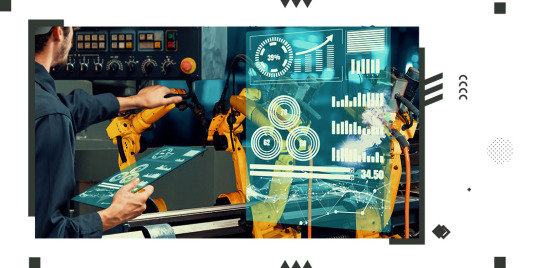
1. ASSEMBLY LINE OPTIMIZATION THROUGH AR
Manufacturing depends on assembly lines, which are the backbone of the industry. These lines require precision, speed, and coordination to keep the entire process running smoothly. AR software solutions have emerged as a powerful tool to optimize assembly line processes, revolutionizing how tasks are performed, monitored, and improved. AR overlays digital information onto the real-world assembly environment, providing workers with real-time guidance, data visualization, and interactive instructions. This technology reduces errors, boosts productivity, and empowers workers to perform tasks with greater confidence and efficiency.
The aerospace giant Boeing adopted AR glasses on their assembly lines. Workers use these smart glasses to receive visual instructions for intricate tasks, reducing the need to constantly refer to manuals or training materials. The AR glasses guide them through complex wiring and assembly procedures, resulting in a 25% reduction in production time and a 40% decrease in errors.
2. ELEVATING TRAINING AND ONBOARDING PROCESSES
Augmented Reality (AR) offers a transformative solution to traditional training sessions by creating immersive and interactive learning experiences that accelerate learning, improve retention, and ensure a seamless transition for new employees into their roles. AR can simulate complex machinery, assembly processes, and maintenance procedures for manufacturing, allowing trainees to gain practical experience in a controlled and engaging environment.
Porsche utilizes AR technology to enhance the onboarding process for its assembly line workers. New employees are provided with AR glasses that display step-by-step assembly instructions directly onto the vehicle components. This immersive approach has led to a reduction in training time and a significant decrease in errors during the assembly process.
3. REMOTE ASSISTANCE AND MAINTENANCE
In the manufacturing industry, efficient maintenance and rapid issue resolution are vital to minimizing downtime and maximizing productivity. AR technology enhances remote assistance and maintenance by overlaying digital information onto physical objects, allowing experts to see exactly what the on-site technicians are seeing and guiding them through complex procedures. For example, the elevator manufacturing giant Thyssenkrupp employs AR for remote maintenance. Remote experts can see what the technicians see, leading to faster issue diagnosis and resolution.
4. ENHANCING QUALITY CONTROL AND INSPECTION
AR overlays digital annotations, diagrams, or color-coded indicators directly onto physical products, making defects and irregularities highly visible. Quality control inspectors can quickly spot anomalies that might be difficult to detect with the naked eye. AR can also provide real-time measurements and comparisons against design specifications. This ensures that components are within tolerances, helping to identify variations and deviations early in the manufacturing process.
Volkswagen employs AR for quality control of car exteriors. Inspectors use AR tablets to view virtual overlays of design specifications on the actual vehicle. This assists in identifying paint defects, dents, and misalignment, ensuring that vehicles meet visual and functional standards. AR ensures that quality control procedures are standardized across different inspectors and locations, leading to consistent evaluations, and reducing variability in product quality. AR-guided inspections provide step-by-step instructions to quality control inspectors, reducing the likelihood of human errors and oversight during the inspection process.
5. DESIGN AND PROTOTYPING ACCELERATION
With Augmented Reality, designers, engineers, and stakeholders can visualize, iterate, and refine designs more efficiently. The AR-driven design and prototyping process eliminates the need for physical prototypes and expedites the entire design process by enabling real-time interactions with virtual models.
AECOM, a global architecture, and engineering firm, employs AR app development services for architectural design and visualization. AR applications allow architects and clients to experience 3D building models at scale in the physical environment. This real-time visualization aids in design validation, spatial planning, and assessing how the proposed design integrates with its surroundings.
6. DATA VISUALIZATION AND ANALYTICS USING AR
By overlaying digital information onto the physical environment, AR enables manufacturers to visualize data in real-time, empowering decision-makers to gain actionable insights, identify patterns, and optimize processes more effectively. For instance, an automotive assembly line can make use of AR to display real-time performance metrics, such as production rates, defect rates, and machine statuses, directly onto the assembly floor. Workers and managers can visualize this data in context, facilitating quick interventions to maintain efficiency and product quality.
AR integrated with data sources, such as IoT sensors, databases, and enterprise systems pulls real-time data for visualization. These insights drive informed decisions, optimize processes, and enhance overall operational efficiency.
7. FACILITATION OF PREDICTIVE MAINTENANCE
Through AR technology, maintenance teams can access vital insights such as temperature, vibration, and pressure readings, allowing them to detect early signs of wear, stress, or deviations from optimal conditions. These visualizations provide an intuitive and immediate understanding of equipment health, enabling timely interventions to prevent costly breakdowns and minimize downtime. GE Aviation for instance utilizes AR for predictive maintenance of aircraft engines. Mechanics use AR headsets to access engine data and digital schematics, which are overlaid with the physical engine. This enables them to diagnose potential problems and transforms maintenance practices from reactive to predictive.
IN A NUTSHELL:
By integrating AR technology into their operations, manufacturing businesses can gain accuracy, flexibility, and sustainable achievements. From assembly line optimization to quality control, training, and predictive maintenance, AR app development services are paving the way for streamlined processes, reduced errors, and enhanced decision-making. Equip your manufacturing enterprise with AR industrial applications and experience the transformative power of AR technology to boost efficiency and profits. Reach out to us at [email protected] and unlock the potential of AR for your success.
0 notes
Text
🔥 Explore the Future of Reality! 🌟
Just stumbled upon this fantastic blog highlighting the Top 12 AR/VR Development Companies in the USA. If you're as excited about Augmented and Virtual Reality as I am, this is a goldmine.
Discover the trailblazing companies shaping the immersive tech landscape. Let's dive into the amazing world of AR/VR together! 🕶️
🚀 Check out the blog here
#AR #VR #TechnologyInnovation #ImmersiveTech
#augmented reality#virtual reality#ar vr app development#ar solutions#ar vr development company#arvr companies in usa
0 notes
Text
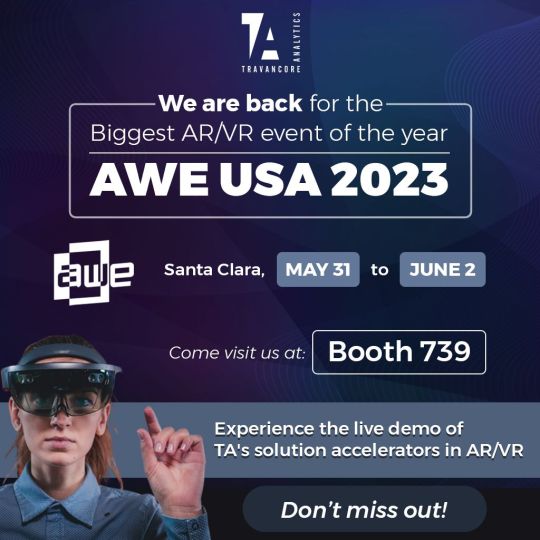
Travancore Analytics is participating in Augmented World Expo, AWE USA 2023, the world's leading AR/VR conference and expo.
Come and experience the latest innovations in AR/VR technology and learn from the industry's top experts.
Be sure to stop by their booth: 739.
Find more details at:
0 notes
Text
How the Integration of AR and IoT enables a smart and interactive environment
Discover how the integration of Augmented Reality (AR) and the Internet of Things (IoT) is transforming the way we interact with the world around us. From smart homes to immersive retail experiences, explore the possibilities of a more connected and interactive environment.
British technologist Kevin Ashton coined the phrase "Internet of Things" (IoT) in 1999 to describe a network that links not just people but also the items in their immediate surroundings. Most people assumed it was the stuff of science fiction movies at the time.
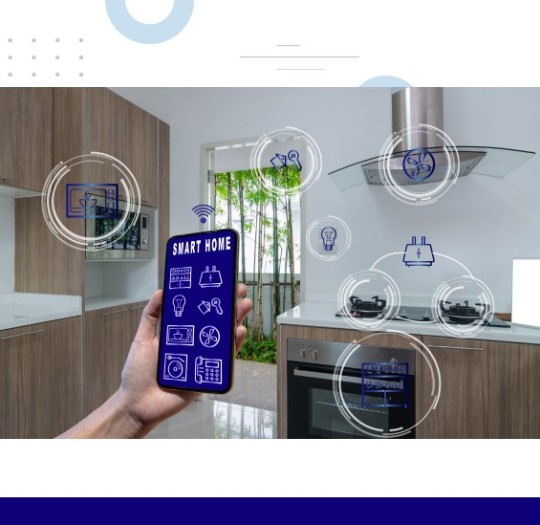
Today, IoT is transforming the world around us, influencing medical, communication, energy and sustainability, utilities, security, facilities, transportation, and many other areas. As digitization transforms every aspect of human existence, from living rooms to offices, augmented reality (AR) is emerging as the key to unlocking the untapped potential of the Internet of Things.
Merging Augmented Reality with IoT
With the help of computer-generated data, augmented reality (AR) offers a view of the real world in augmented space. People can solve their problems intelligently and gain a greater awareness of their surroundings. The Internet of Things (IoT) is a network of physical devices that contain sensors, software, and other technologies. Through the Internet, it communicates and exchanges data with other systems. Statista predicts that the installed base of IoT devices will reach nearly 75.44 billion by 2025.
The combination of IoT and AR is powerful enough to allow users to learn about their surroundings and perform correctly. While IoT provides real-time data access, AR can help to blur the line between the physical and digital worlds. The convergence of AR and IoT is nothing short of a massive revolution, with IoT bridging the gap between physical devices and digital infrastructure and AR digitizing life through real-time interaction with the physical environment. Through collective big data analysis and context-based services, the combination forms the foundation for smart environments.
How do AR and IoT integration facilitate smart and interactive environments?
The complementary integration of Augmented reality and IoT ensures a future smart and interactive living environment by making AR scalable to cover objects everywhere with optimum performance and interacting with IoT in a more intuitive manner. To achieve such a synergistic integration, there are three essential elements:
1. Distributed and object-centric data management
Internet of Things (IoT) and augmented reality (AR) services frequently require the management of generic data and service content for physical everyday objects. When an IoT object communicates its own control interface information, the AR client can be programmed to carry out specific control operations via AR interaction. Thus, the AR client contains critical information such as AR recognition and tracking features, generic content and information about the object itself, a control interface, and organized additional contents for the operation.
An AR user who is interested in AR services can retrieve artificial indicators (or natural features) from nearby objects. The user can then visualize the filtered AR objects, which are nearby IoT-capable objects based on their relative distance or direction from the user, in new locations while holding the mobile device. The required data is then instantly sent to the client AR system for each object with the associated sensor.
By donning a video see-through head-mounted display (HMD) or using a mobile phone with a connected camera module, the user can experience an effective augmented reality (AR) environment (for example, an IoT control interface) to combine the virtual item. A more recent trend in accessing surrounding objects is to use adjacent computing resources in the user's surroundings, rather than enabling computing services on the other end of the network, such as a remote server. The bottleneck assignment issue and the remote server's ability to identify moving objects are two issues that can be resolved with the nearby computing technique.
2. IoT object-guided tracking
AR technologies related to the context of physical objects are closely related to intuitive visualization with attributes that can help physical objects interact with their surroundings. Because of the useful information associated with natural characteristics, an AR system based on natural feature tracking would be more effective than any other AR marker in improving tracking performance. The most important technical challenges for AR are fast, correct, and stable object recognition and spatial tracking.
Another recently popular technique is a feature-based method that uses primitive geometric features and their properties detected by a sensor to identify an object and compute its pose. When it comes to objects without rich features, template image matching is frequently used; however, this method has many drawbacks when it comes to robust 3D tracking. Model-based tracking is a viable method that employs an effort to identify and track target objects by matching and fitting a 3D frame model to the edges derived from a camera image.
AR tracking methods based on the binding of real space and virtual objects should be superimposed in real time over real IoT objects. AR-IoT combination results in robust object-optimized tracking by considering tracking characteristics of each object, accessorial tracking information in limited environments such as darkness, AR authoring for IoT devices, and intuitive representation of physical features of IoT devices.
3. AR-based object control and interface
Object control, either locally or remotely, is now the most common use of the Internet of Things (IoT). IoT objects include actuators to manage the object's functionality as well as sensors for incoming data and networking modules for wireless connectivity. When a user activates an appliance (for example, a television) in the real world, the attributes of the installed sensor to detect the user's action are transferred to the simulated world.
After then, a parallel representation of the actual world can be created from the monitored virtual world. This technology was created to implement eco-feedback for energy conservation. In the future, IoT objects will communicate with one another, and AR users in operational environments will be able to intuitively manipulate the context of objects with the support of innovative AR software solutions. A powerful feature of the AR-IoT combination is object class-based interaction, customization, and optimization.
On an ending note,
Smart Internet of Things (IoT) users are expected to operate and interact with physical objects that can receive augmented reality (AR) datasets anytime and anywhere, enhancing their visual perception. Various AR approaches (e.g., AR tracking, interactivity) have the potential to improve the usability of physical IoT objects in the user's immediate vicinity while also providing classification and taxonomy for IoT-enabled AR.
Smarter and more effective user interactions should be added to the current bare IoT infrastructure. The client can effectively use distributed data or content imbued with individual or meaningful sets and groups of IoT objects. The distribution allows for the scaling and customization of interaction techniques such as augmented reality. If you want to unleash the power of data with AR and IoT, there are countless use cases you can investigate to find the one that best fits your industry type.
However, companies must be proactive in deciding where to deploy the technologies, developing an ecosystem that supports IoT and AR, and developing talent capable of using both technologies. Companies can reduce costs, increase revenue, improve customer experience, strengthen brands, and use contextual data in unimaginable ways by doing so.
0 notes
Text
10 Innovative Examples of IoT in Retail Improving your Shopping Experience
The Internet of Things (IoT) is expected to revamp the retail industry, transforming traditional brick-and-mortar stores into advanced digital stores. The IoT technology in retail has proven invaluable in everything from how customers interact with brands to how businesses deliver customer experiences and run more efficient operations.
It's not surprising that the IoT in the retail market is expected to reach USD 182.04 billion by 2028, with 70% of retailers believing that IoT will have a significant impact on how they do business in the future.
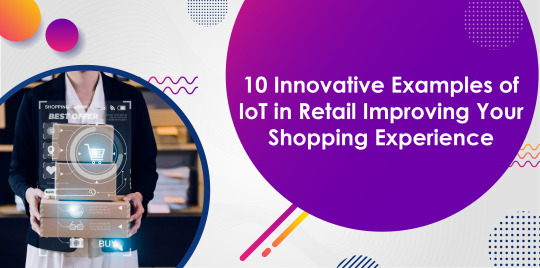
The COVID-19 pandemic had an impact on the retail IoT market, which showed a positive growth rate during the period. This was due to an increase in IoT implementation in business intelligence, and supply chain management to keep up with rising customer retention and optimize operations and processes.
We'll check out 10 innovative applications of IoT in retail in this post, including asset tracking, supply chain management, and facilities management.
1. Customized Interactions
IoT in the retail sector offers customers a wider level of customization. The best illustration is marketing. If you offer a person something they could be genuinely interested in, there is a good chance they will purchase it. For instance, if a person came into your shop and purchased a pair of boxing gloves; the following time, it would be quite acceptable to sell him a mouthpiece, athletic tape, and trunks.
In-store IoT sensors can track customers' journeys, assess their habits, and share insights with the marketing team. Using this information, content teams can create customer-specific content, resulting in a more personalized experience for each customer. It would assist customers in locating products, receiving tips, special offers, and advice, or introducing a friend to the store.
Shops can also use effective IoT development services to provide personalized offers to their customers. Starbucks, for example, employs iBeacon technology, which sends promotion and sales notifications to the phone of the nearest passerby via Bluetooth.
2. Improving Product Utilization
IoT collects all the data of product usage to enhance product maintenance, features, and even design. The product manufacturing company can tweak the settings and make necessary updates on a product as per the client's preference. Also, when it comes time to design a new line-up, all of the information gathered will be useful.
For instance, Rolls Royce uses the IoT to improve the maintenance of its aircraft engines. The brand collects the daily status of the engine and alerts clients as soon as there’s a need for active maintenance. This increases engine efficiency and maximizes product usage.
3. Monitor and Forecast In-store Wait Times
This was a significant advantage of IoT technology in retail, particularly during the Covid-19 pandemic. Using IoT in supermarkets gives information to store employees on how long a customer has been waiting. Based on this information, customers are offered distractions or useful activities to make waiting in line more bearable, while employees can deal with the increased traffic. For example, Disney World has introduced its first IoT-enabled wearable MagicBand to improve service, manage lines, automate payment, and manage guests, among other things.
4. Employing Wearables in Loyalty Schemes
IoT Wearables can help retailers in a variety of ways, including identifying loyal customers and providing additional services. Wristbands are used by hotels to identify premium guests and to provide bonuses and discount programs during their stay. Wearables are a non-intrusive way to offer a loyalty program and express gratitude to those who have long supported the brand.
5. Continuous Status Notification for the Product Delivery
Doorstep delivery has recently gained popularity, increasing the demand for an on-time and secure delivery system. Retailers use IoT technology to track orders in real- time and continuously update order status to customers via web portals or mobile apps. ParceLive is a parcel-tracking service that allows users to track packages in real- time.
6. Automated Checkouts
The customer experience is further enhanced by IoT-powered self-checkout systems, which allow customers to check out of stores and pay balances through their applications. Shoppers would log into their online accounts as they entered the store. Each item picked off the shelf would then be added to the shoppers' virtual cart via sensors embedded in the smart shelves and capable of transmitting signals to user applications — and vice versa.
Amazon Go is without a doubt the most well-known and successful example of large-scale in-store IoT implementation that allows users to shop independently.
7. Food Safety Monitoring
Only the most efficient operations will ensure that goods are delivered and fit for sale and consumption, as food and beverage retailers understand. A lapse in staff judgment or an unnoticed electrical outage can result in stock contamination and loss. The Internet of Things can be used to monitor the temperature of storage areas. Retailers can easily monitor and control the temperature of perishable goods in real time by installing sensors. For example, DriverLink's IoT sensors detect ambient temperature, compare it to a pre-set threshold, and send a notification to a smartphone.
8. Smart Shelves
Smart shelves with weight sensors and RFID tags track items to ensure they are never out of stock and that they are not misplaced on different shelves. This is a useful addition to inventory management because it may eliminate shortages because restocking notifications will be sent in real-time. Furthermore, by connecting each RFID tag to a reader, these shelves can detect in-store theft, reducing the need for security personnel and cameras.
9. Smooth In-store Navigation
The in-store experience for customers can be improved with the use of IoT devices that have sensor-based lighting, temperature controls, security controls, indoor air quality (IAQ), stock monitoring, and point-of-sale queue assistance. The previously mentioned IoT data extraction and analysis aid in compliance monitoring for lighting schedules, energy usage, refrigerated zones, warehousing, HVAC system performance, and maintenance schedules.
10. Electronic Price Tags
The concept of menu cost in economics holds that printing fresh menus and price tags to reflect increased prices would be more expensive during inflationary periods. Dynamic pricing is supposedly made simpler by a digital price tag or digital signage assisted by the Internet of Things technology. For instance, Pricer is a digital signage vendor that provides retailers with the infrastructure for creating electronic price tags.
Final Words:
It makes financial sense to combine IoT and the retail sector. Businesses that use connected devices benefit greatly from their use. A store manager may enhance customer interactions, enhance vendor communication, reduce operational costs and mundane paperwork, and attract new customers. For merchants of any size who want to take advantage of automation and digital transformation prospects, developing an IoT-based platform is a wise investment.
If you're looking to deploy IoT within your store(s) and require a skilled team to discuss, create, and maintain unique IoT-enabled intelligent retail solutions, this is where Travancore Analytics can help! We assist businesses to incorporate IoT in the retail sector by offering a comprehensive range of reliable IoT application development services.
0 notes
Text
Top 5 Emerging Trends in Embedded Systems 2023
Embedded systems are evolving as businesses are pressured to innovate more quickly than ever. Its applications spread across various industries like automobiles, healthcare, household appliances, interactive kiosks, and other end-user devices. The market size of embedded systems was worth more than USD 140 billion in 2022 and is estimated to witness a sharp growth of USD 250 billion by the year 2032 according to the industry statistics of Global Market Insights (GMI).
With the inception of IoT and IIoT, embedded systems have become the catalyst for a rapidly expanding world of smart and intelligent network ecosystems. The popularity of embedded system technology can be attributed to its broad diversity in functions and flexibility and its recent evolution in performing functions faster, more productive, and cheaper.

The development of microcontrollers set the path for the emergence of the embedded system sector, which is advancing rapidly to enable better machine control and monitoring. Embedded system devices are typically powered by software integrated with hardware, such as systems on a chip (SoC), field-programmable gate arrays (FPGA), an IC specifically designed to be programmed by embedded developers for specific functions, and other firmware variations.
There are some emerging trends in embedded systems that would alter the way technology is used in the future. For a better understanding, let's dig in a little deeper.
1. AUTOMOBILES
With the rise of hybrid electric vehicles (HEV) and electric vehicles (EV), embedded systems are clearly the ways and means of achieving multiple objectives in the automotive segment ranging from infotainment systems, fuel management, engine control unit, car-area-network, and safety systems. It is the heart of a vehicle’s electronic system because of its versatility and flexibility. Today, an average car has 25 to 35 microcontrollers, while some premium cars have 60 to 70.
An automobile on the road has computer-controlled electronic systems, and the most commonly used embedded systems in a vehicle include Airbags, adaptive cruise control, drive-by-wire, anti-lock braking system, black box, telematics, satellite radio, traction control, automatic parking, emission control, in-vehicle entertainment systems, night vision, heads up display, tyre pressure monitor, back up collision sensors, navigational systems, and climate control. Traffic management and prediction systems are being developed for large cities which are supported by M2M or V2V communication networks that make ad-hoc networks, gather data from multiple sources, and combine to take decisions for car users and traffic managers. The real-time management of this system is possible only by having seamless embedded software development services for computing and communication.
2. AUTOMATION
From manufacturing to the automobile industry, automation is transforming many different sectors of the economy. Automation aims to speed up production and other operations while lowering the possibility of human error and increasing operator safety. Embedded systems are employed extensively for automation purposes, as they allow devices to be compact, agile, and quick-moving. The majority of embedded systems used in automation applications use single-level cell (SLC) flash memory to survive the shock, vibration, and severe temperatures seen in manufacturing environments.
The embedded OPC-UA technology has made it possible for industrial equipment to interact in a standard, scalable, and secure format, making it one of the major enablers for smart manufacturing. In order to monitor and control HMIs, vision, PLCs, and motion solutions, efficient embedded software development services use machine learning, artificial intelligence, and data analytics. They also provide recommendations for improving performance, enhanced embedded system logic, control, and scalability.
3. HEALTHCARE
Electronic medical devices with the convergence of embedded systems, biotech, nanotech, and sensor technologies are making breathtaking transformations in healthcare delivery and establishing new healthcare paradigms. Bio-medical devices such as home monitoring and diagnostic devices, telemetry, and diagnostic imaging applications solve a wide variety of analytical problems including medicine, surgery, and drug discovery.
It's interesting how wireless communication and sensors came together to develop the BAN, or body area network, which is used to track vital signs like blood pressure, temperature, and oxygen levels. A clip device attached to the headband can be used to detect sleep disturbances as well. These tiny, powerful chips and processors have the ability to link to a network-based diagnostic process and monitor the patient's health.
4. ARTIFICIAL INTELLIGENCE
Artificial intelligence (AI) and its practical application are steadily gaining momentum as more embedded designs have constantly been developed for the advancement of the economy. AI influences a wide industrial spectrum ranging from health care, retail, e-commerce, autonomous driving, manufacturing, supply chain, and banking.
For instance, a smart factory with IoT and AI can significantly boost productivity by monitoring the operation in real-time and allowing AI to make decisions that can prevent operational failures. Embedded software development solutions are anticipated to enhance the AI potential as the cost of AI hardware continues to decline.
5. IOT SECURITY
The Internet of Things (IoT) and digital embedded security are no more an option but a necessity as it is very critical for more transactions happening over embedded devices as front ends. Due to the rapid increase of digital users and remote working environment post-pandemic, cyber security is under greater threat than before. Implementing IoT security solutions along with embedded devices like AI and Robots helps to make decisions on data and their safety to avoid vulnerabilities. IoT security solutions will also protect confidential data from the hands of cyber-attacks efficiently and protect the applications from malicious hackers and ransomware.
Conclusion
Regardless of the global economic turbulence, there would be continued investments in developing more innovative and efficient solutions in the embedded domain to cater to the above-mentioned trends. In order to succeed in the embedded market, companies need to constantly develop and innovate new ideas, and approaches that can provide efficient, quick, low-power, cost-effective solutions to consumers. The coming years tend to surprise us with the most advanced innovations in embedded system technology.
Are you looking for a technological partner to build your embedded software? You can count on Team TA to provide you with expert process guidance and assistance.
0 notes
Text
Top 6 Augmented Reality Uses That Solve Real-Life Problems
Technology has changed and keeps changing our lives like never before. The key idea behind the usage of technological resources is to utilize the knowledge to create solutions. Augmented reality as a technology is often seen as a source of entertainment or leisure. However, it is a technology that has much wider implications which goes beyond the entertainment sector including manufacturing, designing, construction and so on.
AR Software solutions will have a significant role in building tomorrow’s smart cities. In the modern era, an AR development company could be consulted to find any form of engaging and immersive solutions which could turn the course of any business or service. Augmented Reality can offer sustainable, technologically advanced yet productive solutions to different problems of mankind.
The following are the very few among them.
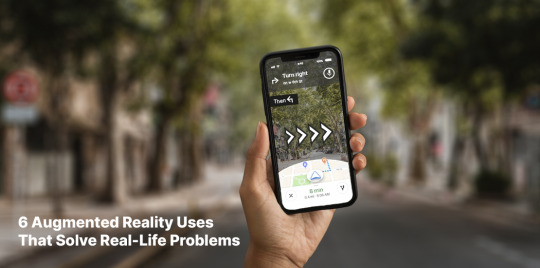
1. Marketing
Marketing involves strategically planning and communicating any information which could have significant commercial implications on any business concern or individual. It is important for every growing business to communicate its products or services to the potential customers to encourage them to participate in business transactions which involves the purchase of goods or utilisation of services offered by such concern.
In the virtual world, it is very difficult to capture the attention of audience to the benefit of the company. Augmented reality can serve as a tool to create an attractive immersive environment that could attract potential customers.
2. Education
Education involves an all-round development of an individual which improves their response to the surrounding environment. Education can significantly change the course of humanity by improvising the information communicated and the manner in which it is communicated.
It is important to grasp the basics and it is difficult to communicate effectively to heterogenous group of students. However, an AR development company can create an immersive environment wherein information could be easily communicated in a creative manner to the students. This could be also helpful in providing training to employees.
3. Event planning
There is a strategic planning and effort behind every successful event. It involves managing the factors of entertainment, safety, décor, arrangements, food and accommodation. One of the key risks in event planning is when the event planner’s vision does not match the reality.
Often a planner shall be planning event based upon the previous experience and available information. However, an event planner might have to wait till execution for the planner to understand the scope of an event. AR offers an immersive environment wherein an event could be visualized prior to it happening.
4. E-commerce
E-commerce is booming in this virtual world with everything being available on your fingertips. People spend hours on E-commerce platforms and purchase several goods online. However, the e-commerce platforms still can’t guarantee product quality and is not devoid of the scams. A potential customer could customize and personalize shopping experience for the customer in e-commerce platforms enabled by augmented reality tools.
5. Design and modelling
Augmented reality has revolutionized manufacturing forever. Augmented reality could be used in designing the product without actually making the physical models of the design which substantially reduces the cost and time. Another aspect of using AR software solutions is that it can potentially reduce the wastage of materials through this. Additionally, usage of technology in the process of design and modelling can help in easily making alterations and understanding the potential risks with the design. It can also help in strategizing the manufacturing process.
6. Repair and maintenance
Repair and maintenance are a key part of any industry. Consistent maintenance and repair of damages is necessary for ensuring the safety, functioning and quality of any machinery. The absence of consistent maintenance could have substantial effect upon the productivity and the profit. It can also cause accidents and failure of machinery.
Any entity would try to ensure that their investment remains productive and profitable. However, the lack of sufficient skilled labor and the expenses in maintaining a permanent team may become detrimental to the interests of a company. Augmented Reality enables virtual assistance, remote repair and training of employees which can enhance the repair and maintenance experience for the companies.
It's of no doubt that technology offers wide prospects to humanity in the future. Every sector is adapting to the needs of the society for faster solutions. Even courts have started using video conferencing to adjudicate matters. However, till the recent years virtual world has been a lot different from the physical world.
Augmented reality enhances the virtual experience to the extent that it is as close as reality. The immersive environment created by an AR development company could change the course of businesses. It would help the companies to adopt real time solutions that would make improve the consumer experience and business viability. Additionally, AR could contribute towards the creation of smart cities as well as public governance through tech enabled solutions which would cost less time and cost
0 notes
Text
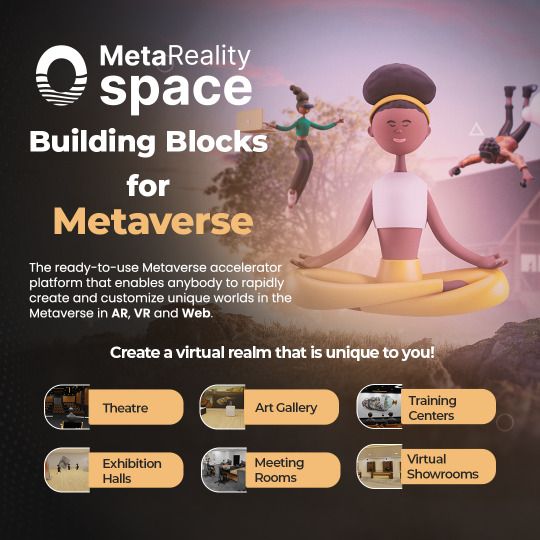
Meta Reality Space is a layered notion, with the Meta Reality Space Engine forming the base layer. Over the Meta Reality Space Engine, we bring you the layer called Space.
Space is your virtual world. It is here where your Metaverse's aesthetic and functionalities lie.
TRY META REALITY SPACE NOW at: Meta Reality Space
0 notes
Text
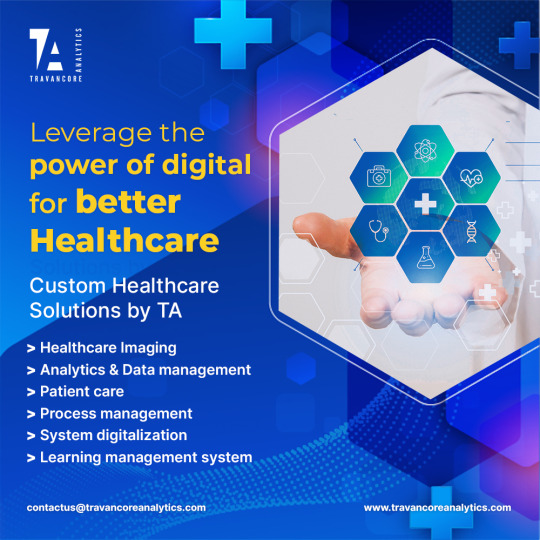
In today’s digital world, if there is one industry that can undeniably benefit from custom software, it has to be healthcare.
Healthcare software development can greatly enhance hospitals, clinics, assisted living facilities, and other care organizations by providing better overall treatments, organizing and monitoring patient data more efficiently, and offering more services for a better experience.
As an industry pioneer, you can count on TA to be the trusted partner in developing cutting-edge healthcare solutions.
Discover how to get started with Healthcare Software Development Solutions: Custom Healthcare Software Development: Everything You Need to Know (travancoreanalytics.com)
#custom software application#custom healthcare solutions#healthcare software development#technology#custom software development
0 notes
Text
5 Ways Virtual Reality Technology Is Changing the World of Advertising
In this tech-savvy world, the demand for new and existing tech such as virtual reality (VR) is steadily gaining momentum. Though VR is not a new technology, over the last few years, the demand for virtual experiences is growing and the size of the market is expected to grow exponentially in the coming years.
One of the major reasons for the growth of this technology is due to the recent advances in the world of gaming that have helped it make its way into people’s homes. Apart from gaming, various industries are also adopting the best and immersive VR technology services and one such vertical is advertising.
Virtual Reality In The World of Advertising
With cutting-edge technology, VR – which many companies have already embraced for their ads – creates an opportunity for advertisers to connect with much wider audiences and resonate with them at an emotional level.
In fact. There are a number of ways that this next-gen technology can either aid or improve ceratin aspects of anyone’s shopping experiences from ensuring product visibility to speeding up the purchasing process and offering an all-new level of customer service
The technology can offer customers a unique perspective, for instance, it offers the users to try out dozens of products in minutes to find the best possible fit, or can view first-hand the social impact their purchases have.
According to a survey by GroupM (2021-2022 Consumer Tech Preferences), customers are extremely open to advertising-enabled content experiences, because nearly one in three respondents said they own an AR or VR device, and 15 percent plan on buying such a device in the next 12 months.
Let’s now see how does virtual reality technology is going to change the world of advertising and how it will benefit both marketers and advertisers:
1.) Create an emotional connection with customers: VR ads are so interactive and realistic that users would feel like they’re playing an engaging video game. It helps to build an emotional connection, increase brand awareness and encourage users to make purchases.
2.) Offer the virtual experience of products: One of the major benefits of VR ads is that users can experience interactivity and enhanced experiences in advertising. Users can virtually “experience” products through VR headsets and controllers which will simulate interactions in the real world such as grasping objects, walking, and so on, with the power of the internet. It also helps to reduce the barriers businesses face in persuading prospective customers to use their product or service as it allows customers to see products at their real size and scale, and also offers opportunities to customer services, creating virtual dealerships.
3.) Turns to advanced hyper-local advertising: We all know that Traditional hyper-local ads just tell customers about places like cafes and outlets, but with VR ads users can view the objects right in front of them; as in real-life. It helps customers to not only get informed about places that might be interesting to them but to get guided there as well.
4.) Drive empathy in non-profit advertising: VR advertising can drive empathy by recreating in-person experiences so that advertisements have a deeper impact. For instance, a 20-minute VR experience created by Stanford explored the impact of racism and bias in the healthcare environment. 94 percent of the audience agreed that the tech used – that is VR - was an effective tool to convey the message.
However, the use of VR in non-profit advertising for non-profit organizations increases awareness, evokes empathy, and is likely to prompt action. It has become one of the new frontiers of fundraising and also allows donors to experience realities that are often far away and difficult to imagine.
5.) Offer higher conversion rates: Instead of a static ad, interactive and immersive VR advertising allows customers to engage with different products or destinations and would create a higher conversion rate.
Embracing VR technology services for advertising alone is not going to make any drastic change in your marketing, the key is finding the true potential of this technology and using it in more unpredictable and innovative ways. Create unique, memorable, and highly personal ad campaigns using VR technology, so that audiences get an entire experience of your product or brand and will give you an edge over your competitors.
One thing is for certain though, VR technology is here to stay, and will be changing people’s perceptions of advertising for years to come. If you are looking for VR advertising, contact TA. Our custom AR and VR development services, advanced tools, and leading-edge technologies aim at assessing your VR advertising needs and provide you with realistic, yet interactive virtual spaces to engage your digital needs.
#virtual reality#virtual reality development#vr development#ar vr app development#vr app development#vr technology services#technology
0 notes
Text
9 Key Reasons Why You Need AR VR Technology For Your Business In 2022
AR and VR technology is here to stay. These technologies offer businesses in any industry including gaming, IT, etc. with boundless possibilities.
Technology is changing everything around us, including the way we do business. Augmented Reality (AR) and Virtual Reality (VR) technologies are creating revolutions in the business sector. While augmented reality is an interactive user interface that supports digital information over the real world to improve user experience, virtual reality creates a virtual surrounding by using special equipment like a VR headset. With the support of an experienced AR/VR development company, businesses can even create wonders.
Diverse industries ranging from gaming to entertainment & media, aerospace, defense, healthcare, education, manufacturing and retail are now making use of AR and VR technologies for different applications.
The report from Allied Market Research has predicted the augmented and virtual reality market size to reach $454.73 billion by 2030, registering a CAGR of 40.7%. Key drivers that boost the growth of the market are - mobile gaming industry and increase in internet connectivity.
Let's explore 9 key reasons as to why businesses need AR and VR technology that is already becoming mandatory in the current world.
1. STAFF TRAINING:
Training the newcomers, no doubt, is quite time consuming. AR tools can be used to make training more interactive. In your office, AR can be used to enhance the learning and comprehension of both trainees and seasoned workers. AR helps reduce training costs and related expenses, along with boosting employee engagement.
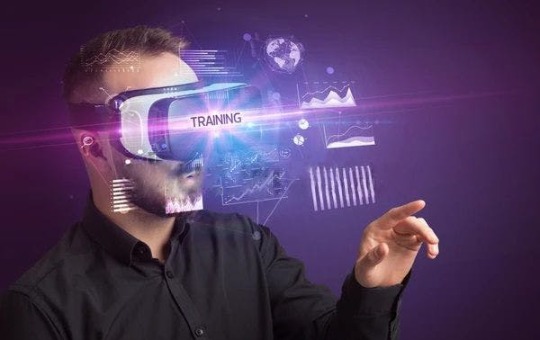
AR supports structured learning using hardware devices like cameras and GPS. Even though the initial cost is high for AR training equipment, it is reusable and replaces other training charges. New comers will get more real life experience on how things work and they’ll be prepared to handle any work challenges.
2. MARKETING:
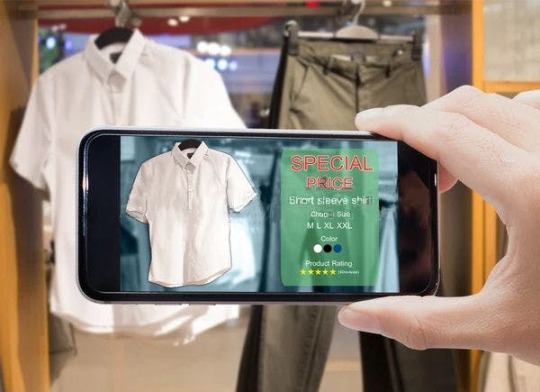
Another major application for AR and VR technology in business is marketing. It provides unique ways to promote products or services. Businesses are now using these technologies in different ways for advertising and marketing, such as - creating personalized ad experiences that are unique to each individual, improving the online shopping experience via social media, replacing in-person events with virtual meetings, providing more options to improve online shopping experience, creating more marketing opportunities for the gaming sectors, providing more support in the decision making process, imitating real-world scenarios to speed up human learning, and more.
3. CUSTOMER SATISFACTION:
Increased customer experiences, no doubt can grow your business. AR and VR play a key role in enhancing customer satisfaction. It can support your company’s customer experience strategy to a great extent.
With services like post-purchase support, customers can make informed decisions, which help brands to build brand loyalty. Customers can visualize personalized versions of their products with these technologies. For instance, VR experiences and AR content provided especially by car manufacturers allow customers to experience sitting in their customized cars and thus help them make informed purchasing decisions.
4. DATA VISUALIZATION:
Visualization of data is now much easier with 3D technologies, unlike traditional 2D options. Users can now easily interact with the data and gain more insights out of it. Data sharing among teams can be done much faster, as VR/AR provides options to see even complex data at once.
For faster processing, data can be presented in multiple dimensions too. More and more users can monitor data models and analyzing data can no longer be a boring task. Rather, it can improve an immersive experience. AR/VR assisted analytics tools can assist companies to make better data driven decisions.
5. IMPROVING RETAIL SHOPPING EXPEREINCE:
Not only Ecommerce stores, even retailers can improve customer’s shopping experience with AR and VR tools. For example, in a boutique or textile, AR apps can easily make it possible for the customers to try dresses virtually without even taking it.
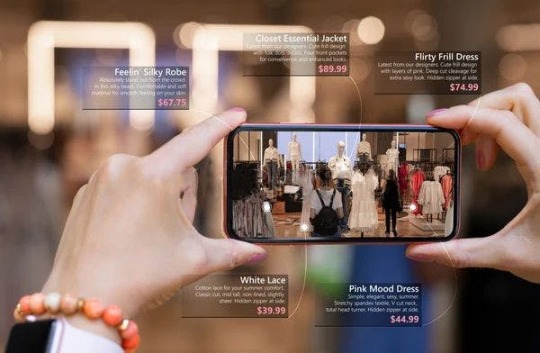
Such advancements can make the consumer’s shopping experience effortless and at the same time entertaining. Such tools can also save you the cost of hiring a full-time employee, as with AR and VR support customers can themselves browse more details about a product in the store, even try it virtually and even learn more about it before purchasing. They can even check other people’s reviews for the product with such apps.
6. EXHIBITIONS:
Museums are also making use of AR/VR to improve their visitor’s exhibition experience. Adding more digital explanations of pieces, displaying digital versions of artists next to their work, creating 3D animations that visitors can interact with, providing options to add visited items to one’s own virtual collection while walking around the museum etc works better in making visitors understand more information quickly.
There are museums that are activating the artworks marked with QR codes even on busy streets. AR and VR technologies provide more options to engage customers in a digital way and grab their attention.
7. ECOMMERCE:
Online stores can use AR to allow customers to preview products in their real environment, before making a purchase. Providing virtual try-on solutions to help online shoppers understand what they’re buying, offering preview placement options for any products, inserting an interactive user manual, using AR filters on social media, creating 3D models, etc, makes it easy for stores to showcase new products, attract new customers and boost audience engagement. Online shoppers can use AR and VR options to create a more interactive shopping experience.
8. REAL ESTATE:
Realtors can use AR and VR in a smart way to develop the sector in diverse ways. Applications may include many options such as showcasing properties in a virtual environment, creating virtual guides on property details, creating insightful real-estate shopping tour, creating visuals on how a finished construction piece would look like, providing training assistance for construction workers, developing DIY instructions to tenants, making plan measurements just by simply pointing AR/VR devices, providing virtual assistance in design, architect, and construction stages, and more. There are many more smart ways to empower your real estate and construction business using AR and VR tools.
9. STUDENT ENGAGEMENTS:
In the education sector, businesses can use AR/VR to support better understanding of lessons and thus promote student engagement. VR headsets are of great support in explaining even complex topics in an effective way. As COVID-19 pandemic has made it mandatory for students to stick to the online education system, integration of such technologies can make online education more interesting and can promote self-learning among students.
The Markets and Markets report has predicted the augmented and virtual reality in education market to reach USD 19.6 billion by 2023, at a Compound Annual Growth Rate (CAGR) of 16.2% during the forecast period 2018-23. Major factors that drive this market growth are reported to be -
Wide acceptance of AR or VR for corporate training and development
Continuous innovation in these technologies.
Increased participation and learning engagement.
Demand for tailored learning experiences.
Use of connected devices in these technologies in education.
Remember that Augmented Reality and Virtual Reality are emerging tools that provide innovative opportunities for growth in many industries, at the same time we also have to enable organizations to gain an edge over competitors who are not up to date with the trends. AR and VR, no doubt, will soon be part of our everyday lives.
Make sure you partner with a reliable VR development company like Travancore Analytics to transform your business to suit the advanced customer needs.
#virtual reality#business#technology#ar vr app development#arvr#2022#staff training#data visualization#ecommerce#shopping
0 notes
Video
tumblr
AR-based DC Generator for training. #training The application can be used to identify a predefined object and a 3D model can be generated of the same for interactive training sessions. Achieve effective learning with the ar development services by Travancore Analytics
0 notes
Link
Read our blog on virtual showroom software development. Virtual showrooms can be the best value addition in multiple business sectors. Furniture shops, high-valuation real estate ventures, recreational vehicle showrooms, heavy equipment manufacturing companies, and other product owners can make the best use of this.
1 note
·
View note